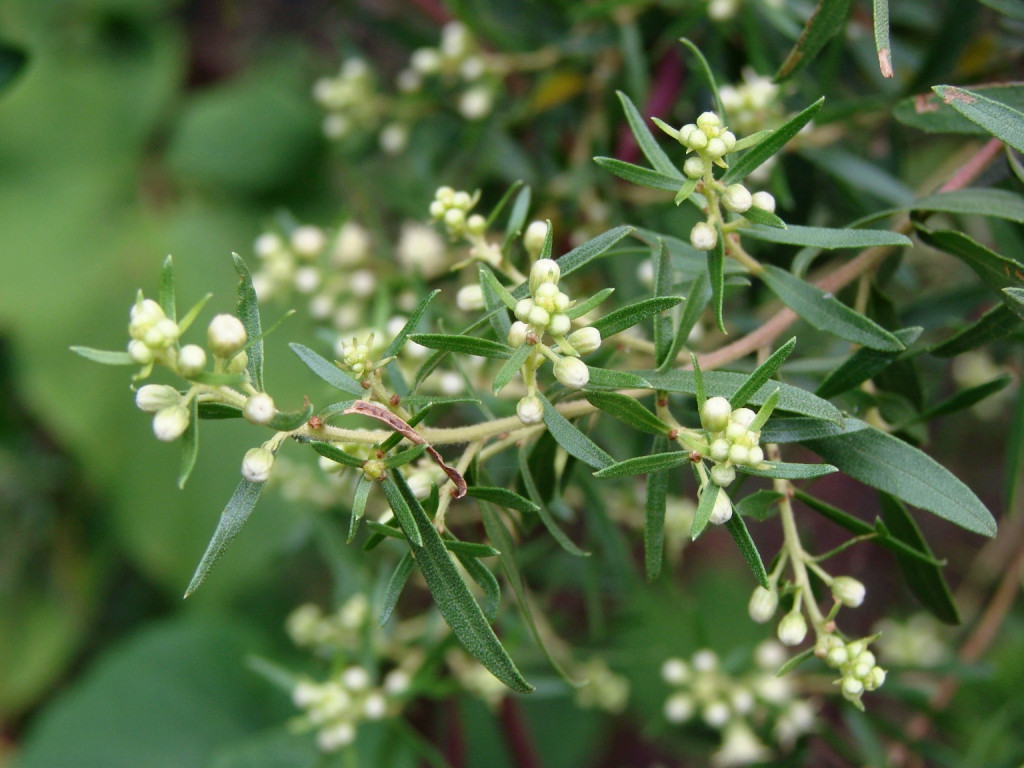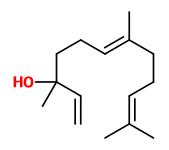Dies ist eine alte Version des Dokuments!
Baccharis dracunculifolia DC. - syn.Baccharis bracteata Hook. & Arn.; Baccharis leptospermoides DC.; Baccharis pulverulenta Klatt - Asteraceae
vassoura, alecrim do campo (braz.)
Shrub, native to South America (Bolivia, Paraguay, Peru).
http://www.tropicos.org/Name/2700274
„More than 100 constituents of the commercial topped Brazilian Vassoura oil (ex Baccharis dracunculifolia DC.) were identified by GC-MS and 1H-NMR spectra. The oil is composed of c. 19% of monoterpene hydrocarbons, c. 2% of oxygenated monoterpenes, c. 38% of sesquiterpene hydrocarbons, and c. 35% of oxygenated sesquiterpenes (15% nerolidol). The trace constituents (E)- and (Z)-4,8-dimethylnona-3,7-dien-2-one, the vitispiranes, the theaspiranes, β-damascone, β-damascenone, the cabreuva oxides, β-ionone, and some 3-phenyl propanoates are olfactorily valuable.“
[Weyerstahl, Peter, Christian Christiansen, and Helga Marschall. „Constituents of Brazilian vassoura oil.“ Flavour and fragrance journal 11.1 (1996): 15-23]
„Baccharis dracunculifolia, “Vassoura”, is a shrub with spontaneous occurrence in Brazil, Uruguay, Argentina, Paraguay, and Bolivia. The Vassoura oil, valuable in the perfumery industry for its exotic aroma, presents variations in composition depending on the geographical origin and extraction process. The commercial importance is related to the oxygenated fraction content, specifically to (E)-nerolidol and spathulenol…
The nonoxygenated monoterpenes, present in the hydrodistilled oil in high contents (β-pinene, 28.2%; limonene 10.6%), were not detected in the SCCO2 extracts.
The total yields obtained by hydrodistillation and SFE were 0.36% and 0.38%, respectively. The contents of (E)-
nerolidol and spathulenol obtained by SCCO2 , 47.5% and 16.4%, were higher than those obtained in the hydrodistilled oil, 13.5 and 9.8%.“
[Cassel, Eduardo, et al. „Extraction of Baccharis oil by supercritical CO2.“ Industrial & engineering chemistry research 39.12 (2000): 4803-4805]
„B.dracunculifolia DC. (Asteraceae), a native plant from Brazil, commonly known as ‘Alecrim-do-campo’ and ‘Vassoura’, is widely used in folk medicine for the treatment of inflammation, hepatic disorders and stomach ulcers…
Baccharis dracunculifolia is the most important botanical source of Southeastern Brazilian propolis, known as green propolis for its colour… the percentage of ulcer inhibition was significantly higher in groups treated with B.dracunculifolia, cimetidine or omeprazole, with all protocols used, compared with negative control groups. Regarding the model of gastric secretion, reductions in the volume of gastric juice and total acidity were observed, as well as an increase in the gastric pH. B.dracunculifolia has potential to be used as a phytotherapic preparation for the treatment of gastric ulcer.“
[Lemos, Marivane, et al. „Baccharis dracunculifolia, the main botanical source of Brazilian green propolis, displays antiulcer activity.“ Journal of Pharmacy and Pharmacology 59.4 (2007): 603-608]

Baccharis dracunculifolia, Parque Olhos D'Água, Brasil, CC BY-SA 2.0, Author: João Medeiros
https://commons.wikimedia.org/wiki/File:Flickr_-_Jo%C3%A3o_de_Deus_Medeiros_-_Baccharis_dracunculifolia.jpg

